News Articles
The latest episode of "Tales of Ancient Life" is now available!
March 31, 2021
The latest episode of "Tales of Ancient Life" is now available! In this episode, Assistant Curator of Paleontology Dr. Adam Pritchard details the discovery of Aquilolamna, a bizarre fossil shark with wing-like fins that closely resembles giant manta rays! Special thanks to Carter Bank & Trust (www.cbtcares.com) and Boxley Materials Company (www.boxley.com) for helping make this episode possible! ABOUT TALES OF ANCIENT LIFE Our planet has an incredible story to tell and VMNH Assistant Curator of Paleontology Dr. Adam Pritchard helps share it through his original video series, "Tales of Ancient Life". Dr. Pritchard uses spectacular fossils and other scientific specimens from the museum's paleontology collections to ...
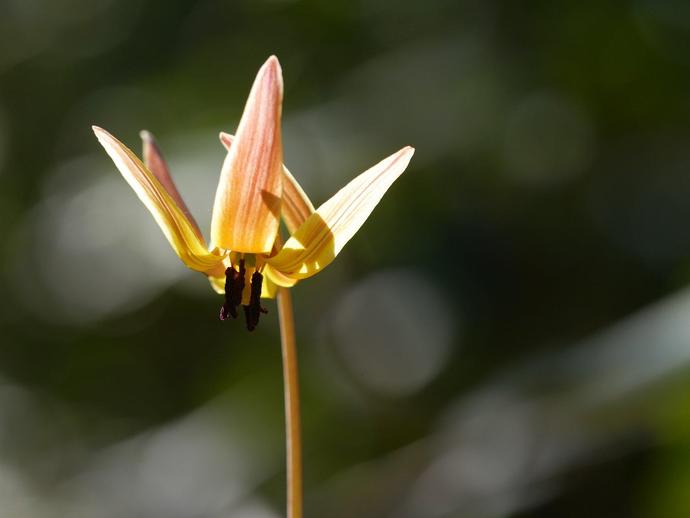
It's time for the Wednesday edition of #BenInNature presented by our friends at Carter Bank & ...
March 31, 2021
It's time for the Wednesday edition of #BenInNature presented by our friends at Carter Bank & Trust! Here's a cool find that a few of us museum folks spotted this week while wandering the Smith River Trails near Eggleston Falls in Ridgeway: Erythronium americanum, the yellow trout lily! If you want to spot these beautiful flowers yourself, now is the time to go looking. Yellow trout lilies are what are known as "spring ephemerals," which refers to perennial plants that emerge very quickly in spring and then die back immediately after a short growth and reproduction phase. The rest of the year, they exist only as underground bulbs. The main reason they bloom so early in spring is that it allows them to soak up the sun ...
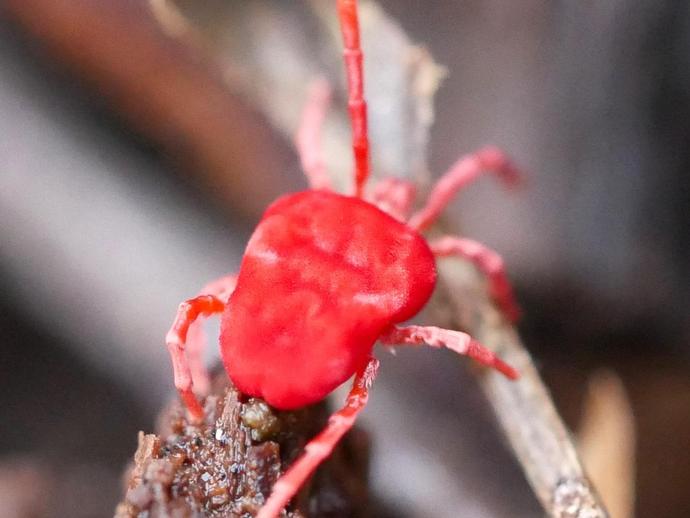
It's time for today's edition of #BenInNature presented by our friends at Carter Bank & Trust!
March 30, 2021
It's time for today's edition of #BenInNature presented by our friends at Carter Bank & Trust! If you have a garden, you've probably been working in it one day and seen a tiny, bright-red critter about an eighth of an inch long crawling through the dirt. These little guys are known as red velvet mites! Red velvet mites belong to the family Trombidiidae, and they're arachnids just like spiders, ticks, scorpions, and chiggers. They most closely resemble chiggers, although you don't have to worry about them biting you, unless you happen to be a very tiny insect. These mites make their home in leaf litter. As larvae, they parasitically attach themselves to other insects and feed on their hemolymph, which is the insect ...
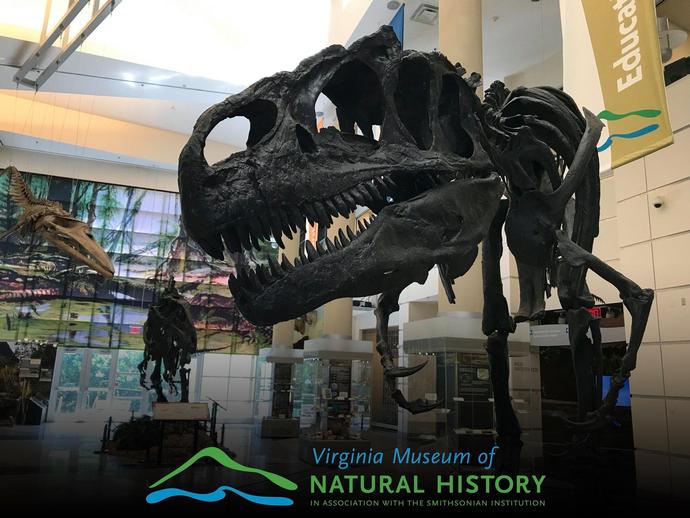
We are thrilled to announce Hooker Furnishings as the museum's latest corporate partner in ...
March 29, 2021
We are thrilled to announce Hooker Furnishings as the museum's latest corporate partner in support of the museum's ongoing participation in the national "Museum's for All" initiative, a program which provides free or reduced admission to more than 500 museums throughout the United States for Electronic Benefit Transfer (EBT) cardholders. Additionally, the sponsorship will underwrite the costs of providing a number of museum educational programs for students in underserved Virginia public schools. Specifically, the partnership allows the museum to waive all admission fees for visitors who present their EBT card at the VMNH box office now through April 2022 as part of the "Museum's for All" initiative led by the Institute of ...
In this edition of "Ask an Expert" ...
March 29, 2021
In this edition of "Ask an Expert", VMNH Administrator of Science Ben Williams receives a nature question from special celebrity guest George Wendt, aka Norm from the beloved sitcom "Cheers." The question: is it true that slugs love beer? The answer: you'll have to watch to find out! Don't miss out on the most star-studded, slug-filled "Ask an Expert" video yet!
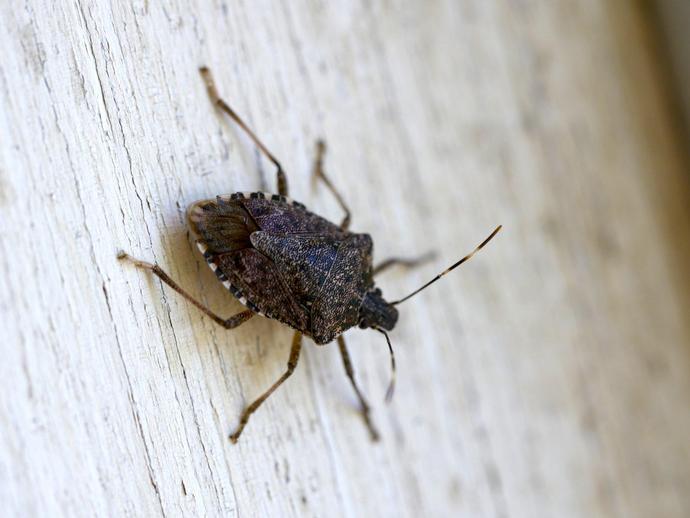
We're reaching into the archives for today's #BenInNature update presented by our friends at ...
March 28, 2021
We're reaching into the archives for today's #BenInNature update presented by our friends at Carter Bank & Trust! The following post was originally published on June 6, 2020. I'm going to go out on a limb here and guess that everyone is intimately familiar with this critter, whether you want to be or not. This is Halyomorpha halys, better known as the brown marmorated stink bug. These stink bugs are native to Asia, and they were first collected in the U.S. in 1998. They were found in Allentown, Pennsylvania, and it's believed they were stowaways in packing crates. Compared to many invasive species, they spread quite quickly; by 2010, they had become a major pest in orchards along the east coast. Some stone fruit growers ...
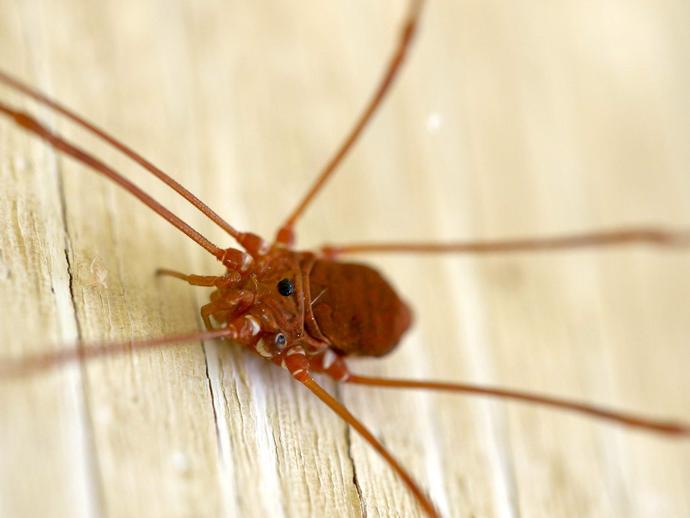
We're reaching into the archives for today's #BenInNature update presented by our friends at ...
March 27, 2021
We're reaching into the archives for today's #BenInNature update presented by our friends at Carter Bank & Trust! The following post was originally published on June 5, 2020. This is a harvestman, better known as "Daddy Long-Legs." These little critters belong to the order Opiliones, and you'd be hard-pressed to find someone who isn't familiar with them. There are more than 6,500 described species of harvestmen worldwide, and they can be found on every continent except Antarctica! While you can find harvestmen throughout much of the year in the U.S., they're most common in autumn, which is likely how they got the common name "harvestmen." Because they're so familiar and common, there are a few misconceptions and urban ...
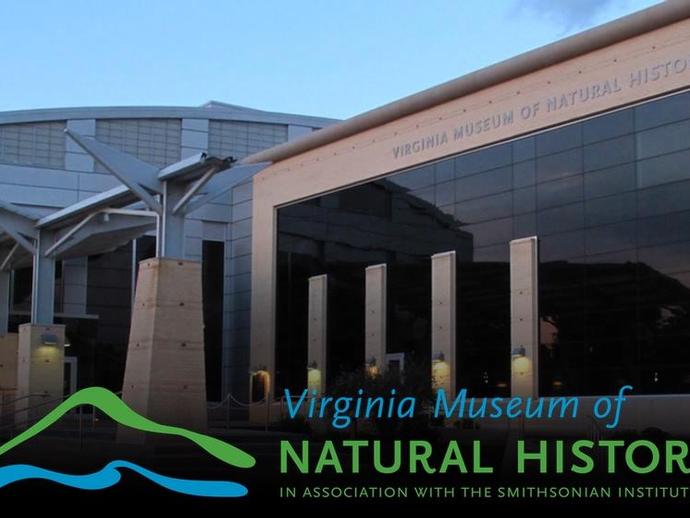
NEW DAYS AND HOURS OF OPERATION Please note that beginning April 2 ...
March 26, 2021
NEW DAYS AND HOURS OF OPERATION Please note that beginning April 2, the museum will be open to visitors on Fridays and Saturdays from 10 a.m. to 4 p.m. and closed all other days. As health conditions continue to improve, the museum plans to add more days of operation to the schedule. We hope you can visit us soon!
Lynx ...
March 26, 2021
Lynx, known for their short tails and distinctinctive tufts of black hair on the tips of their ears, are the focus of this week's "Museum Minute"! ABOUT MUSEUM MINUTE The Virginia Museum of Natural History has a spectacular assortment of displays within its exhibit galleries! Some displays are unforgettable, while others don't always get the attention they deserve. Through the original series "Museum Minute", museum educators highlight various displays throughout the exhibit galleries, while providing intriguing facts you may not have known. "Museum Minute" is made possible thanks to VMNH Corporate Partners Carter Bank & Trust (www.cbtcares.com) and Boxley Materials Company (www.boxley.com).
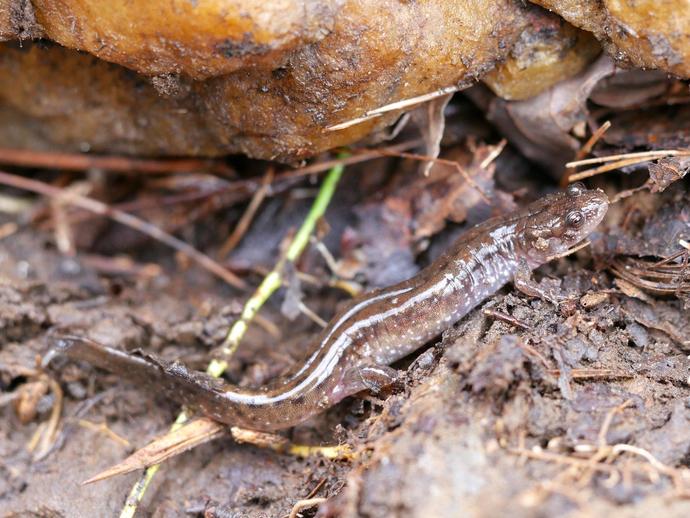
It's time for the Friday edition of #BenInNature presented by our friends at Carter Bank & Trust!
March 26, 2021
It's time for the Friday edition of #BenInNature presented by our friends at Carter Bank & Trust! I always get excited when I find a cool salamander, especially when it's a species I've never found on my property before! According to VMNH Research Associate and herpetologist extraordinaire Jason Gibson, this little fellow is most likely Desmognathus planiceps, the flat-headed salamander. D. planiceps looks almost identical to D. fuscus, the dusky salamander. According to Gibson, based on the location of my property in Patrick County and the place where I spotted this one (underneath a rock in a low-lying, swampy, forested area near a creek), it's more likely to be D. planiceps. Of the two, the flat-headed salamander ...
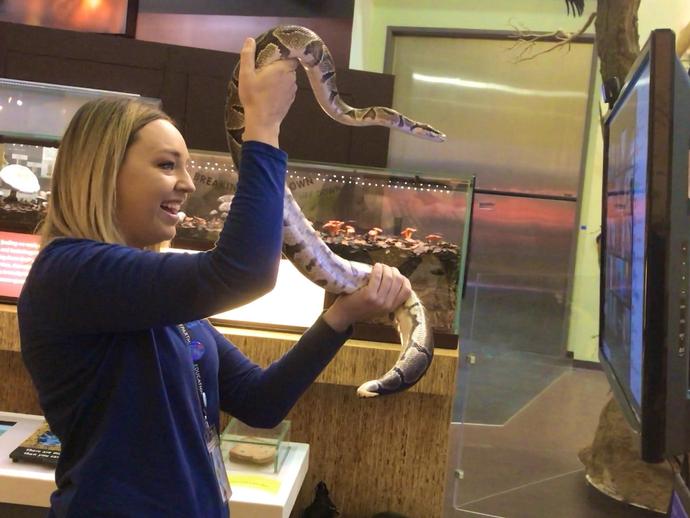
Over the last two days ...
March 25, 2021
Over the last two days, museum educators have been providing free distance learning programming for students at Fishburn Park Elementary School in Roanoke and Meadow View Elementary School in Henry County thanks to scholarships funded by museum partner Boxley Materials Company! Students participated in the "It's Alive!" program, in which they investigated life cycles, characteristics, behaviors, and adaptations of some of the museum's fascinating live animals, such as Reggie (ball python), Sheldon (painted turtle), as well as the museum's resident Madagascar hissing cockroaches! VMNH distance learning programs bring students to the museum without ever having to leave their seats. Through the use of two-way video, classes ...
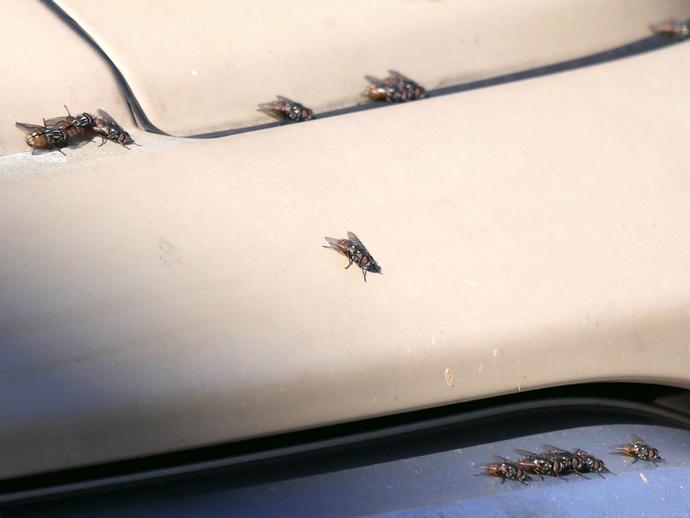
It's time for the Thursday edition of #BenInNature presented by our friends at Carter Bank & ...
March 25, 2021
It's time for the Thursday edition of #BenInNature presented by our friends at Carter Bank & Trust! Ah, spring! The weather starts warming up, the flowers begin to bloom, and flies descend on my home like a scene out of The Amityville Horror! Yes, some of the signs of spring are definitely better than others. Every year for about a week or so, hundreds of houseflies (Musca domestica) congregate on the warm, sunny sides of my house and on my car (as seen in the photo). I'm sure many of you have noticed the same thing; one day there will be no houseflies, and then suddenly they're everywhere. Where do they all come from? While many species of flies are active throughout the year, houseflies aren't big fans of cold ...
Both the Virginia Museum of Natural History and Taubman Museum of Art (Roanoke) have been named ...
March 25, 2021
Both the Virginia Museum of Natural History and Taubman Museum of Art (Roanoke) have been named finalists for the prestigious 2021 National Medal for Museum and Library Service! In total, 15 museums and 15 libraries are finalists for this year's award. The National Medal is the nation's highest honor given to museums and libraries that demonstrate significant impact in their communities. Follow the link to learn more about this tremendous honor!
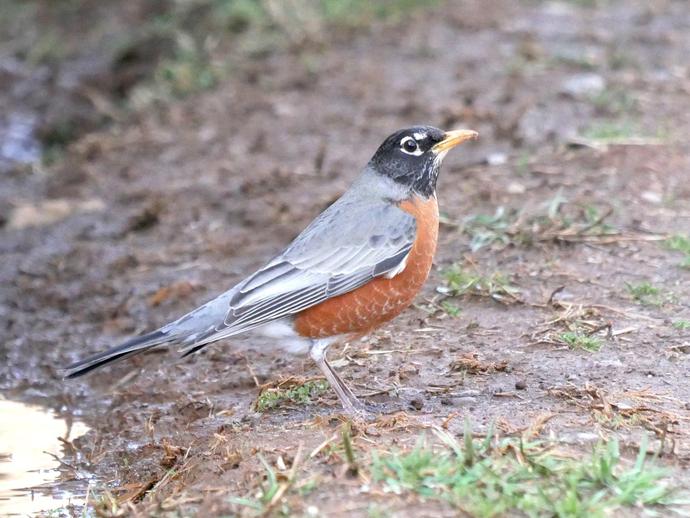
It's time for today's edition of #BenInNature presented by our friends at Carter Bank & Trust!
March 24, 2021
It's time for today's edition of #BenInNature presented by our friends at Carter Bank & Trust! The American robin (Turdus migratorius, truly one of the most unfortunate binomial names) is one of our most recognizable birds. It's also one of our most misunderstood! If you were to ask a bunch of folks to name some signs that spring has arrived, there's a good chance that many would mention seeing the "first robin of spring." There's a widely-held belief that robins migrate in the winter and return just as spring arrives. However, if you live in the continental U.S., the robins have been here all year long! In fact, museum staff almost always spot a few robins each December during the annual Christmas Bird Count. How did ...
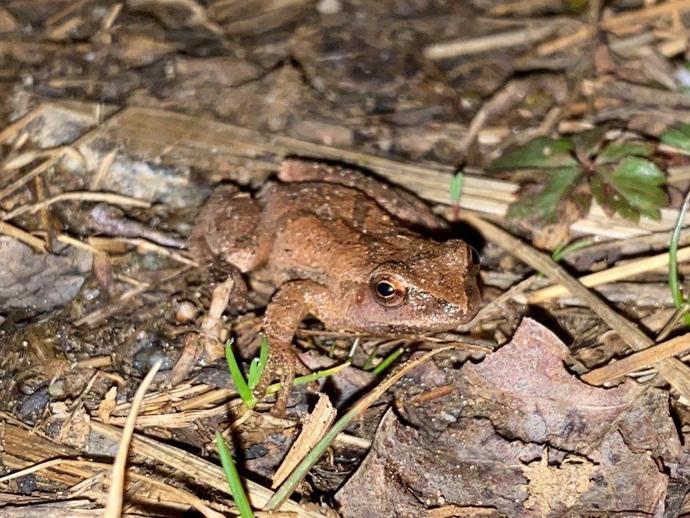
Ben here with another edition of #BenInNature presented by our friends at Carter Bank & Trust!
March 23, 2021
Ben here with another edition of #BenInNature presented by our friends at Carter Bank & Trust! One of my favorite signs that spring has arrived is when the spring peepers start chirping! I've been hearing spring peepers at my place for a couple of weeks now, but they were particularly loud and numerous last night, and I snapped a photo of this one right next to the pond. Spring peepers (Pseudacris crucifer) are small chorus frogs that can be found throughout the eastern U.S. and Canada. They're quite small, measuring between one and one-and-a-half inches in length, and are usually brown or tan, which makes it quite easy for them to blend into their surroundings. You can tell you've spotted a spring peeper if it has a ...
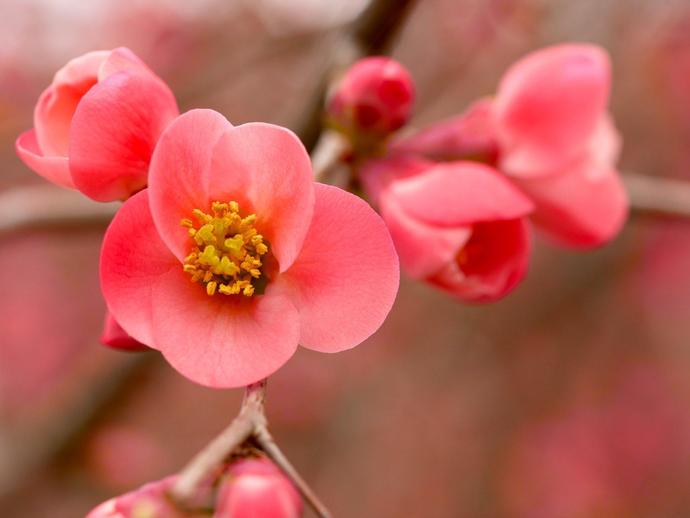
Ben here with the Monday edition of #BenInNature presented by our friends at Carter Bank & Trust!
March 22, 2021
Ben here with the Monday edition of #BenInNature presented by our friends at Carter Bank & Trust! Back in the day, my grandpa went through a spell where he decided to plant dozens of trees and shrubs around the house (and I was recruited to help, which means I've forgotten more about digging holes than many people ever know). This particular tree is one of the first to bloom every spring, and for years I wondered what it was. As it turns out, it's Chinese quince (Pseudocydonia sinensis)! Chinese quince is native to southern and eastern China, and it's the only species in its genus. It's a member of the massive family Rosaceae, which includes not only roses, but also raspberries, blackberries, apples, plums, strawberries, ...
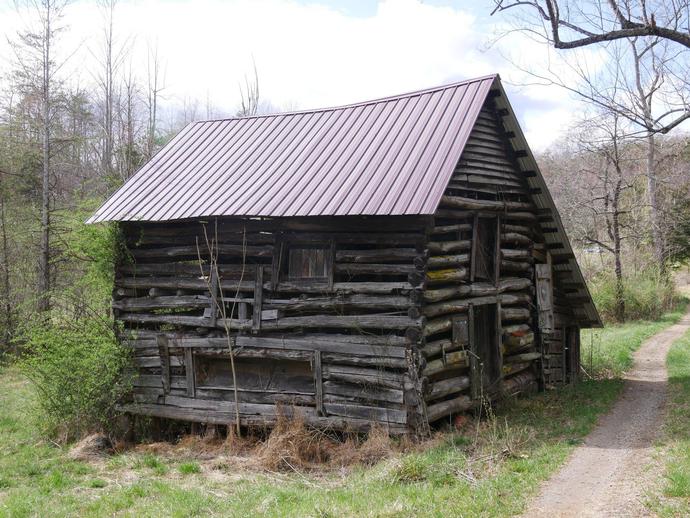
We're reaching into the archives for today's #BenInNature update presented by our friends at ...
March 21, 2021
We're reaching into the archives for today's #BenInNature update presented by our friends at Carter Bank & Trust! The following post was originally published on June 4, 2020. You might look at this picture and think I'm getting pretty desperate for nature updates if I'm posting a picture of an old barn. However, today's update is actually about the building material! This barn on my family property was constructed prior to the Civil War, and it was made out of American chestnut (Castanea dentata). The American chestnut was once considered one of the most important timber trees in the world, but disaster struck in the early 20th century when a fungus known as chestnut blight (Cryphonectria parasitica) was accidentally ...
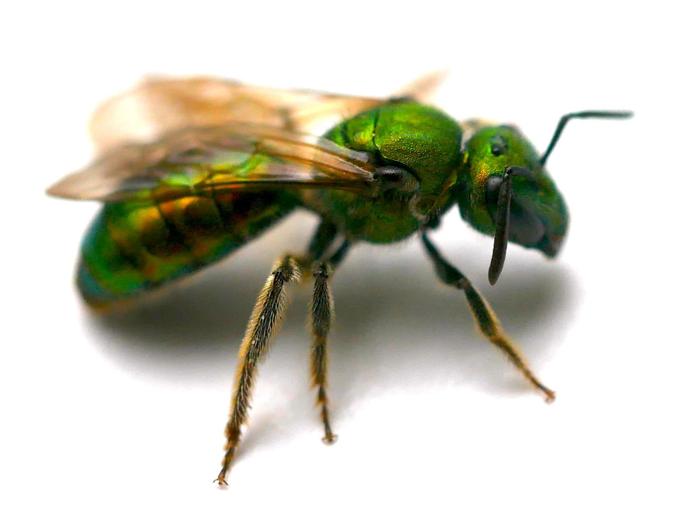
We're reaching into the archives for today's #BenInNature update presented by our friends at ...
March 20, 2021
We're reaching into the archives for today's #BenInNature update presented by our friends at Carter Bank & Trust! The following post was originally published on June 3, 2020. This beautiful critter is a female Augochlora pura, which is a type of sweat bee. These bees are herbivores and you can usually find them lapping up nectar from flowers. Most sweat bees belong to the family Halicitidae, and they get their common name because they sometimes land on people to lick their perspiration, most likely for the salt. Unfortunately, this behavior sometimes causes them to get swatted or crushed, which often causes them to sting; however, a sweat bee sting is about the mildest sting you can experience. Augochlora pura is a ...
Reggie ...
March 19, 2021
Reggie, the museum's resident ball python, is a non-venomous constrictor and the center of attention during this week's episode of "Museum Minute"! ABOUT MUSEUM MINUTE The Virginia Museum of Natural History has a spectacular assortment of displays within its exhibit galleries! Some displays are unforgettable, while others don't always get the attention they deserve. Through the original series "Museum Minute", museum educators highlight various displays throughout the exhibit galleries, while providing intriguing facts you may not have known. "Museum Minute" is made possible thanks to VMNH Corporate Partners Carter Bank & Trust (www.cbtcares.com) and Boxley Materials Company (www.boxley.com).
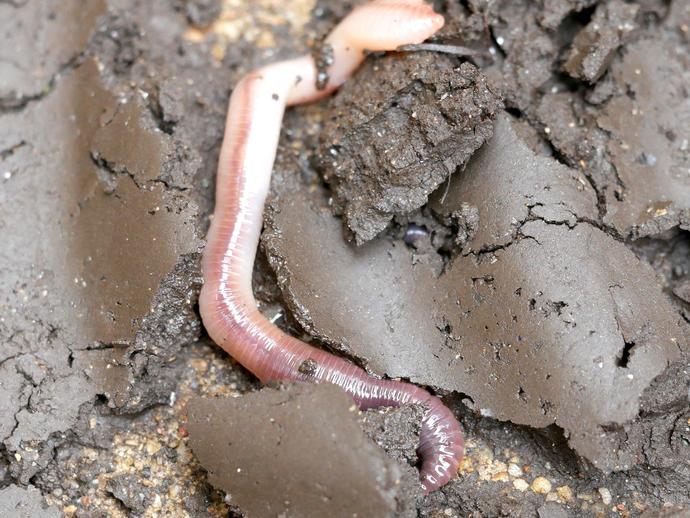
Ben here with the Friday edition of #BenInNature presented by our friends at Carter Bank & Trust!
March 19, 2021
Ben here with the Friday edition of #BenInNature presented by our friends at Carter Bank & Trust! This fellow is Lumbricus terrestris, also known as the common earthworm or nightcrawler! These large, reddish earthworms are generally not the most common earthworms in a given area, but you're much more likely to encounter them due to their size and their propensity to come to the surface after a rainstorm. Unlike most earthworms, they also come to the surface to mate. Get a room, guys. Like the dandelion we looked at earlier this week, nightcrawlers fall into the increasingly broad category of "things I always assumed were native to the U.S. but are actually an invasive species." Yes, believe it or not, these guys are ...
Major news!
March 18, 2021
Major news! The Institute of Museum and Library Services announced today that the Virginia Museum of Natural History is among 30 finalists for the 2021 National Medal for Museum and Library Service! In total, 15 museums and 15 libraries throughout the nation are finalists for this year's award, which is the nation's highest honor given to museums and libraries that demonstrate significant impact in their communities. To celebrate the honor, IMLS is encouraging VMNH community members and fans to share stories, memories, pictures, and videos on social media using the #ShareYourStory and #IMLSmedals hashtags, and engage with IMLS on Facebook (Institute of Museum and Library Services) and Twitter (www.twitter.com/us_imls). ...
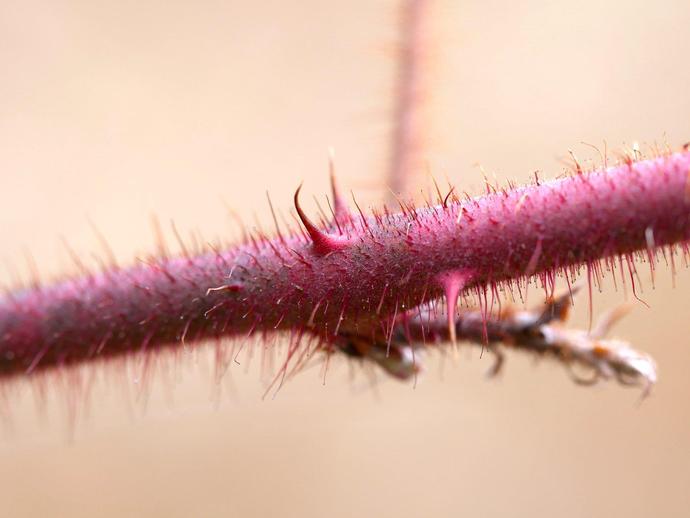
Ben here with today's edition of #BenInNature presented by our friends at Carter Bank & Trust!
March 18, 2021
Ben here with today's edition of #BenInNature presented by our friends at Carter Bank & Trust! This is a close-up shot of a wineberry vine (Rubus phoenicolasius), and as someone who spends a fair amount of time wandering through forests and fields, it's one of two plants that I am not terribly fond of (the other being Smilax, which we'll look at in a future update). Wineberry is pretty easy to spot, even in winter; the vines are red, fuzzy, and covered in spines. It produces small flowers in late spring which eventually turn into aggregate fruits resembling raspberries. In fact, the genus Rubus is the same genus to which raspberries and blackberries belong, and wineberries taste sort of like extra-tart raspberries. ...
The newest issue of Banisteria is now available!
March 17, 2021
The newest issue of Banisteria is now available! In it, you can find interesting scientific articles on a variety of Virginia natural history topics, including Eastern Hercules Beetle behavior, nematode parasitism of Norther Short-Tailed Shrews, and a large annotated checklist of the Coleoptera in the Smithsonian Environmental Research Center. The PDF version can be found at: https://virginianaturalhistorysociety.com/banisteria/pdf-files/ban54/Banisteria_54.pdf
The latest episode of "Tales of Ancient Life" is now available!
March 17, 2021
The latest episode of "Tales of Ancient Life" is now available! The Solite Quarry, located along the central Virginia-North Carolina border, is a shale rock quarry that preserves the remains of an ancient lake that existed there approximately 225 million years ago. From this site, museum researchers have collected a large array of fossils, none of which are more common than that of the clam shrimp! Clam shrimp are not clams and they technically aren't shrimp, but they are a member of the crustaceans and Assistant Curator of Paleontology Dr. Adam Pritchard is here to tell you all about these unheralded creatures! Oh, and don't miss a special appearance by Paleontology Technician Lucy Treado! Special thanks to Carter Bank ...
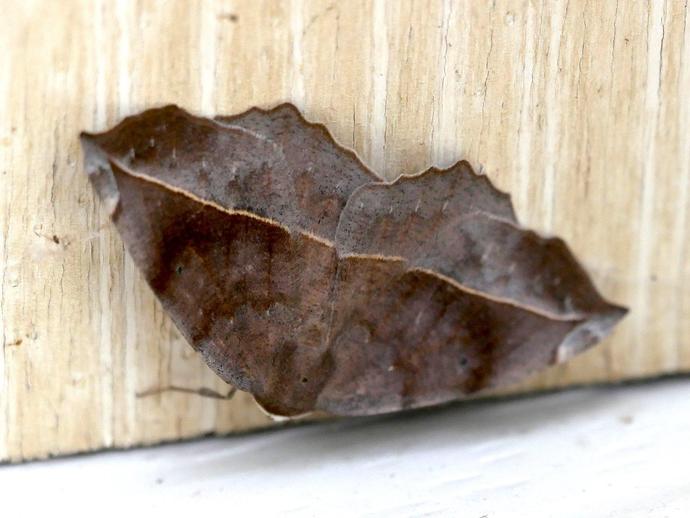
Ben here with the Wednesday edition of #BenInNature presented by our friends at Carter Bank & ...
March 17, 2021
Ben here with the Wednesday edition of #BenInNature presented by our friends at Carter Bank & Trust! It's hard to believe, but today marks one year since my very first nature post! I had hoped to commemorate the day with a video that I'm working on, but unfortunately, the weather hasn't been cooperating just yet. In the meantime, we'll celebrate with a cool moth! This is Eutrapela clemataria, also known as the curve-toothed geometer moth! Interestingly, this species is the single representative of the genus Eutrapela. The geometer moths belong to the family Geometridae, and they get their name from their caterpillars; geometer moth caterpillars are the familiar "inchworms," and "geometer" roughly translates to "measure ...
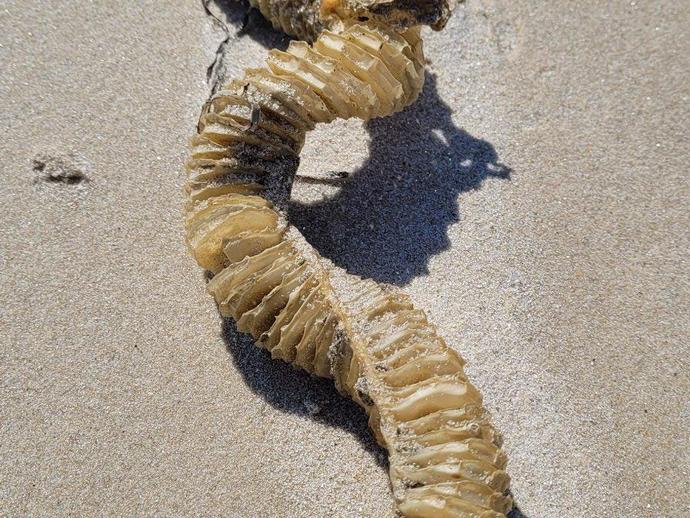
During a recent trip to Hampton ...
March 17, 2021
During a recent trip to Hampton, Virginia, VMNH Associate Curator of Recent Invertebrates Kal Ivanov and Research Technician Liberty Hightower did not miss the opportunity to join Hampton University's Assistant Professor Shawn Dash on an impromptu birding trip at Grandview Nature Preserve! Part of the hike included an extensive sandy beach along Chesapeake Bay, where a most unusual discovery took place – a "Mermaid's necklace". This strange, paper-thin string of circular capsules was nothing like our VMNH friends have ever seen before. Luckily, Dr. Dash had an immediate answer – these alien-like structures were not the mermaid's long lost jewelry, but the egg cases of a creature that some of us have enjoyed for ...
Speaker: Kip Mumaw, Principal Engineer of Ecosystem Services
March 16, 2021
Speaker: Kip Mumaw, Principal Engineer of Ecosystem Services
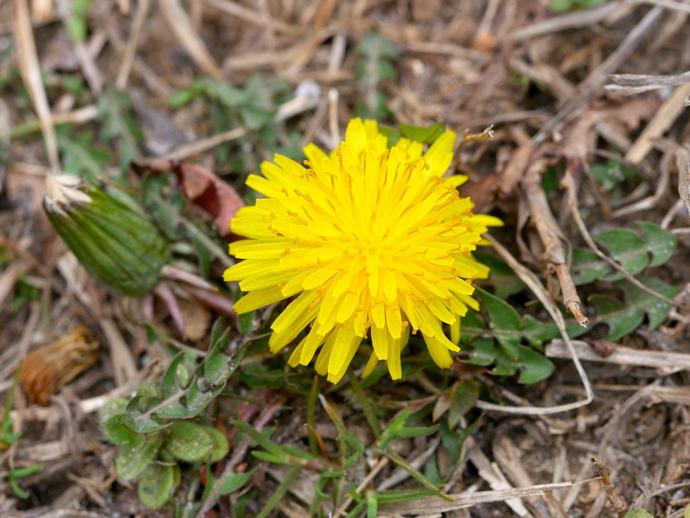
Ben here with today's edition of #BenInNature presented by our friends at Carter Bank & Trust!
March 16, 2021
Ben here with today's edition of #BenInNature presented by our friends at Carter Bank & Trust! The common dandelion (Taraxacum officinale) is so ubiquitous that, like me, you might have assumed it was a native species. Remarkably, it is not! The common dandelion is native to Europe to Asia, and believe it or not, it was introduced in America to serve as a food crop! What kind of food can you make from dandelions? You can make dandelion wine from the flowers, a beverage I was introduced to in the song "My Old Kentucky Home" by Randy Newman. You can also use the greens to make salads (apparently they taste similar to mustard greens), and the roots can be used to make a coffee substitute if you're REALLY hard up for a cup ...
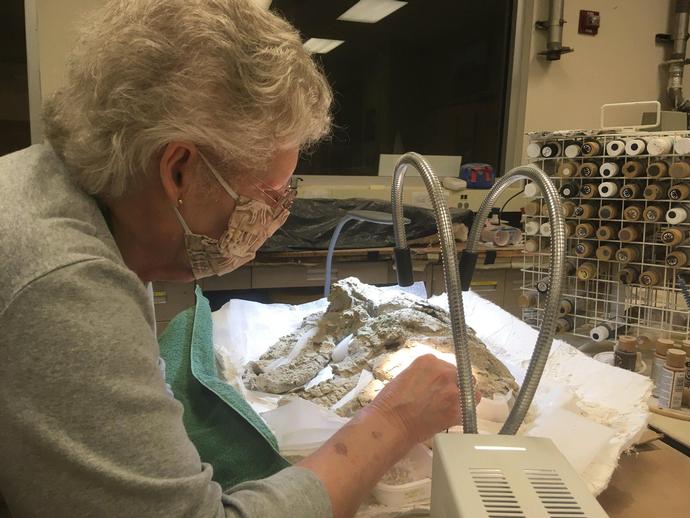
VMNH Volunteer Alicia Lantz is working on a sequence of caudal (tail) vertebrae from a sauropod ...
March 15, 2021
VMNH Volunteer Alicia Lantz is working on a sequence of caudal (tail) vertebrae from a sauropod dinosaur from the Morrison Formation of Wyoming. These vertebrae date to about 150 million years in age and were collected by field crew from the museum and the University of Lynchburg! If you are interested in helping collect fossils in Wyoming this summer, please consider joining our list of volunteers! Visit www.vmnh.net/research-collections/2021-wyoming-dinosaur-dig to learn more.
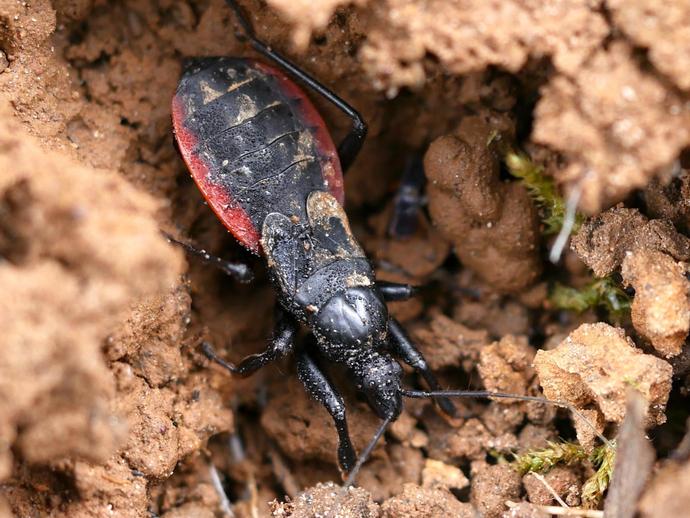
Ben here with the Monday edition of #BenInNature presented by our friends at Carter Bank & Trust!
March 15, 2021
Ben here with the Monday edition of #BenInNature presented by our friends at Carter Bank & Trust! This little lady is Melanolestes picipes, also known as the black corsair bug or the black May-beetle eater! You can tell this one is a female because of the tiny reduced wings on her back. While female black corsair bugs lack the ability to fly, the males grow full-sized wings and will sometimes be attracted to porch lights during the spring and summer. These bugs belong to the assassin bug family Reduviidae, and they are skilled hunters. They have flared, fuzzy pads on their legs that almost resemble little leg-warmers, and these help them grasp prey insects. They're particularly fond of May beetles, as their other common ...
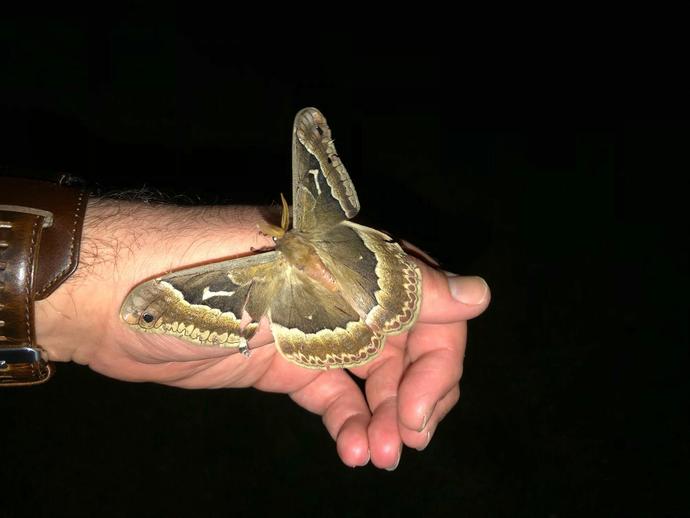
We're reaching into the archives for today's #BenInNature update presented by our friends at ...
March 14, 2021
We're reaching into the archives for today's #BenInNature update presented by our friends at Carter Bank & Trust! The following post was originally published on June 2, 2020. I was excited to have this impressive visitor show up to my back porch on Saturday night! This is Callosamia angulifera, also known as the tulip tree silkmoth or the giant silkmoth. This species can be found throughout much of the east coast, as long as the area has American tulip trees (Liriodendron tulipfera). The caterpillars of these magnificent moths eat the leaves of tulip trees, while the adults don't eat anything at all. In the northern part of their range, tulip tree silkmoths have one generation per year and can be spotted from June ...
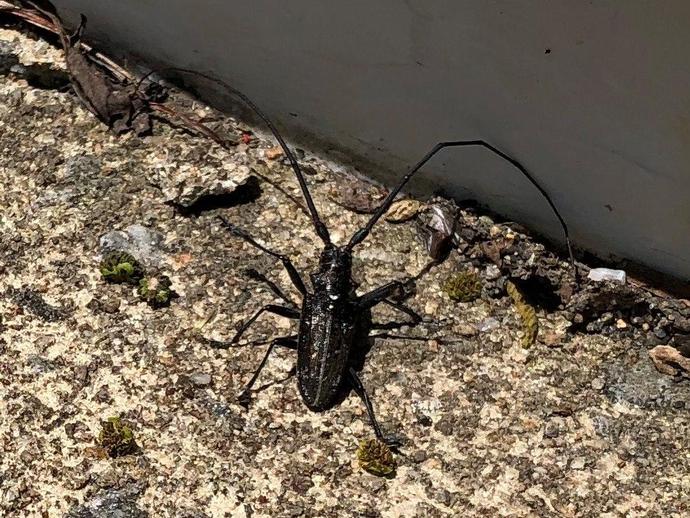
We're reaching into the archives for today's #BenInNature update presented by our friends at ...
March 13, 2021
We're reaching into the archives for today's #BenInNature update presented by our friends at Carter Bank & Trust! The following post was originally published on June 1, 2020. This is Monochamus scutellatus, commonly known as the white-spotted sawyer beetle. Sawyer beetles are pretty hard to miss; in male beetles, the antennae can be twice as long as the body! These beetles lay their eggs in dead or dying pine and spruce trees. The larvae burrow into the bark and feed on the wood until they emerge as adults, which can take between one and four years. Because they require dead or dying trees to complete their life cycle, white-spotted sawyer beetles thrive in forests that have experienced fires; in fact, the more severe ...
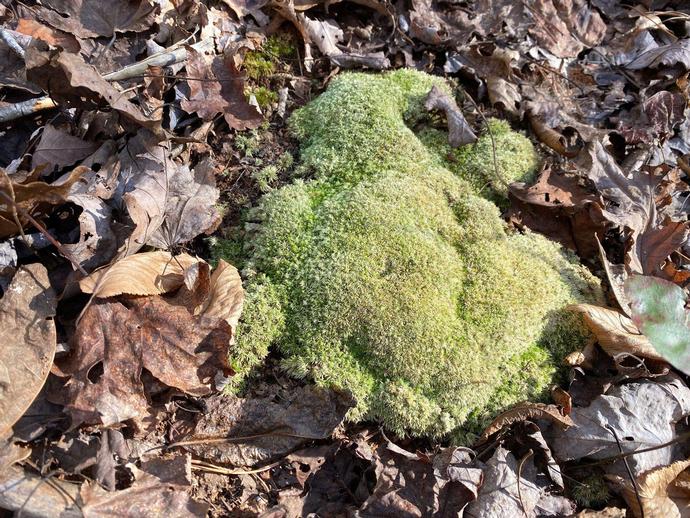
Ben here with the Friday edition of #BenInNature presented by our friends at Carter Bank & Trust!
March 12, 2021
Ben here with the Friday edition of #BenInNature presented by our friends at Carter Bank & Trust! Today, we'll be examining the most fascinating, thrilling lifeform we've looked at yet: moss! All right, moss isn't exactly the most exciting thing in the world, but it's a pretty interesting plant! Or rather, division of plants; mosses belong to the division Bryophyta and the more than 12,000 different species of moss are collectively referred to as "bryophytes." Mosses are very small, non-vascular flowerless plants that grow in dense clumps, and typically their leaves are just one cell thick! Unlike most plants, moss does not draw water up through its roots and send it to the leaves; instead, the leaves absorb water and ...
Nile crocodiles take the spotlight in this latest episode of Museum Minute!
March 12, 2021
Nile crocodiles take the spotlight in this latest episode of Museum Minute! ABOUT MUSEUM MINUTE The Virginia Museum of Natural History has a spectacular assortment of displays within its exhibit galleries! Some displays are unforgettable, while others don't always get the attention they deserve. Through the original series "Museum Minute", museum educators highlight various displays throughout the exhibit galleries, while providing intriguing facts you may not have known. "Museum Minute" is made possible thanks to VMNH Corporate Partners Carter Bank & Trust (www.cbtcares.com) and Boxley Materials Company (www.boxley.com)!
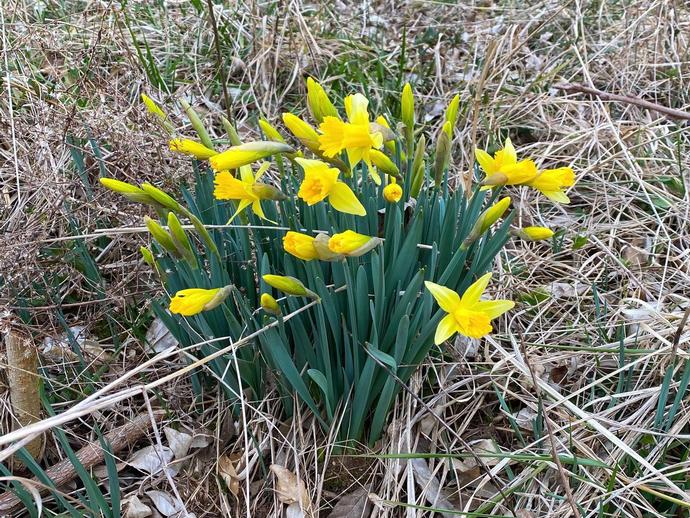
Ben here with today's edition of #BenInNature presented by our friends at Carter Bank & Trust!
March 11, 2021
Ben here with today's edition of #BenInNature presented by our friends at Carter Bank & Trust! Nothing signals spring's imminent arrival quite like seeing daffodils beginning to bloom, sometimes while there's still snow on the ground! Daffodils belong to the genus Narcissus, and there are at least 50 different species of these beautiful flowers. Daffodils aren't native to the U.S.; they're actually native to southern Europe and northern Africa, but they have been spread across the world over the course of centuries. They thrive in USDA hardiness zones 3B through 10, which covers most of the U.S. and Canada, which is why they're so ubiquitous here in the States. Daffodils generally sprout and bloom in late winter and ...
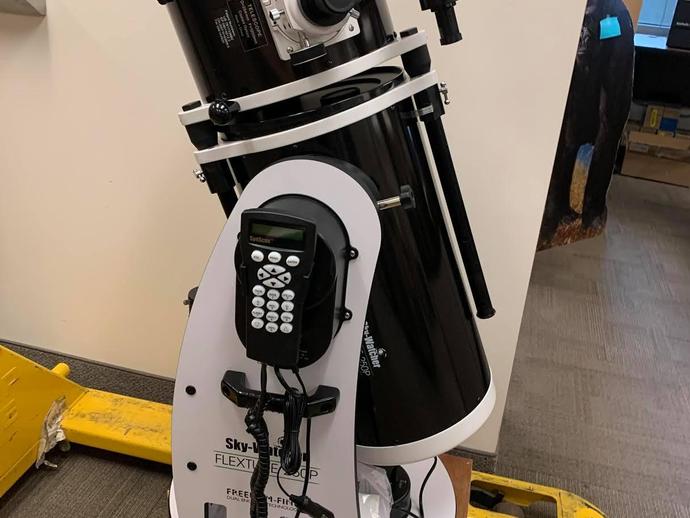
Astronomy at VMNH just became this much more fun!
March 10, 2021
Astronomy at VMNH just became this much more fun!
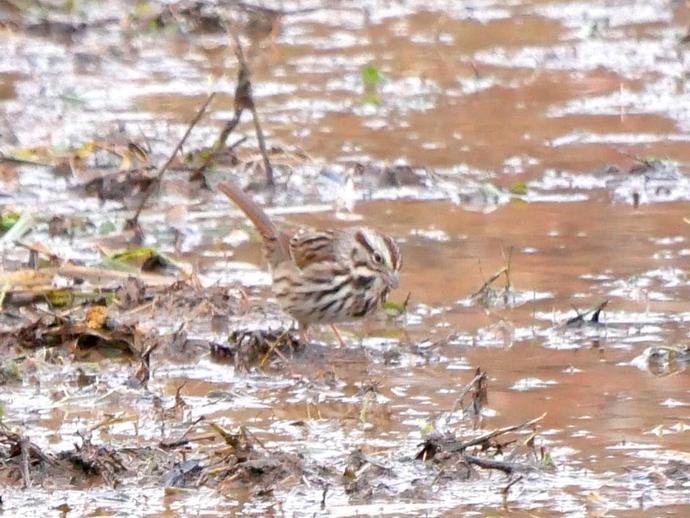
Ben here with the Wednesday edition of #BenInNature presented by our friends at Carter Bank & ...
March 10, 2021
Ben here with the Wednesday edition of #BenInNature presented by our friends at Carter Bank & Trust! The song sparrow (Melospiza melodia) is one of the most abundant and adaptable birds in North America, and depending on the time of year, it can be found across the entirety of the continental U.S. and a large portion of Canada. Song sparrows get their common name from their wide range of songs; they have a repertoire rivalling Bob Dylan! A single song sparrow can know as many as 20 different songs and have as many as 1,000 variations on those songs. They usually repeat the same song multiple times before switching to a different one, and their songs are particularly crisp and precise. Interestingly, song sparrows ...
Big thanks to Momenta for providing the museum with years of exceptional website service!
March 9, 2021
Big thanks to Momenta for providing the museum with years of exceptional website service!
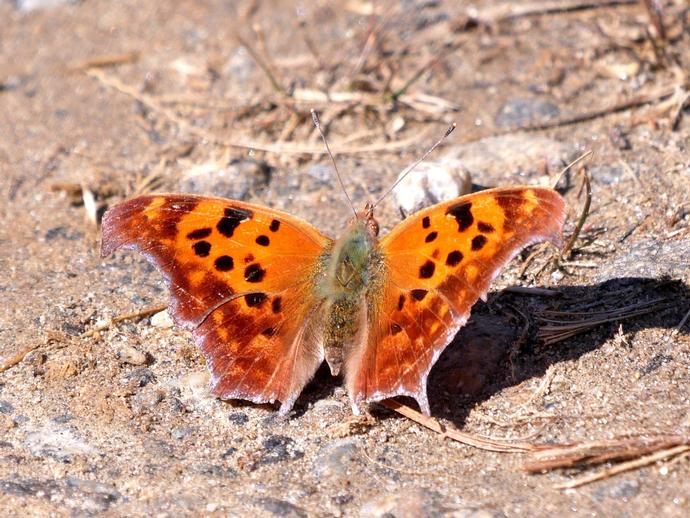
Ben here with another edition of #BenInNature presented by our friends at Carter Bank & Trust!
March 9, 2021
Ben here with another edition of #BenInNature presented by our friends at Carter Bank & Trust! Here's a cool find that I spotted just yesterday: Polygonia interrogationis, better known as the question mark! While there are plenty of insects that remain active throughout the winter and very early spring (most of them small and wildly unphotogenic), I didn't expect to see a butterfly on the wing on March 8! After all, the only flowers in bloom at my place right now are some daffodils and crocuses. However, the question mark is an unusual little butterfly that doesn't play by anyone's rules! Many butterflies overwinter as eggs or larvae, but the question mark overwinters as an adult! It finds a nice sheltered spot and ...
Today is International Women's Day; a day we celebrate the achievements of women all over the ...
March 8, 2021
Today is International Women's Day; a day we celebrate the achievements of women all over the world! In honor of the day, NASA is providing the Zoom webinar "Taking Flight: How Girls Can Grow Up to be Engineers" at 7pm! The webinar will feature a talented team of women engineers who operate rovers on Mars and who are working on the helicopter first flight. The panelists will share their "origin stories," their paths to NASA, and advice about careers in STEM. Click the link to learn more about this learning opportunity!
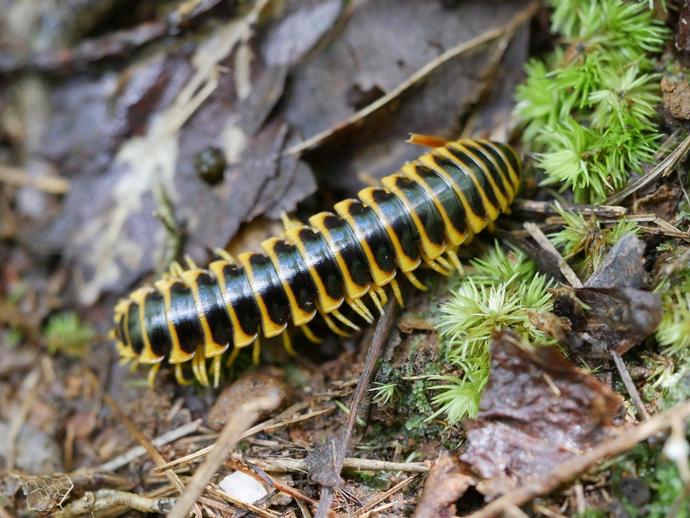
Ben here with another edition of #BenInNature!
March 8, 2021
Ben here with another edition of #BenInNature! Today's nature post is quite possibly the coolest one yet. It's a long story, but I promise it's an interesting one! About a year ago, VMNH Myriapodologist (millipede expert) Dr. Jackson Means and Associate Curator of Invertebrate Zoology Dr. Kal Ivanov visited my family property in Patrick County for a millipede hunt. While we were out in the woods raking leaf litter, Dr. Means found this little guy. He had a suspicion that it was the Laurel Creek millipede Apheloria whiteheadi (and he was incredibly excited). Before he could confirm the ID, he had to examine the millipede's gonopods under a microscope (the gonopods are modified legs on a millipede's seventh body segment ...
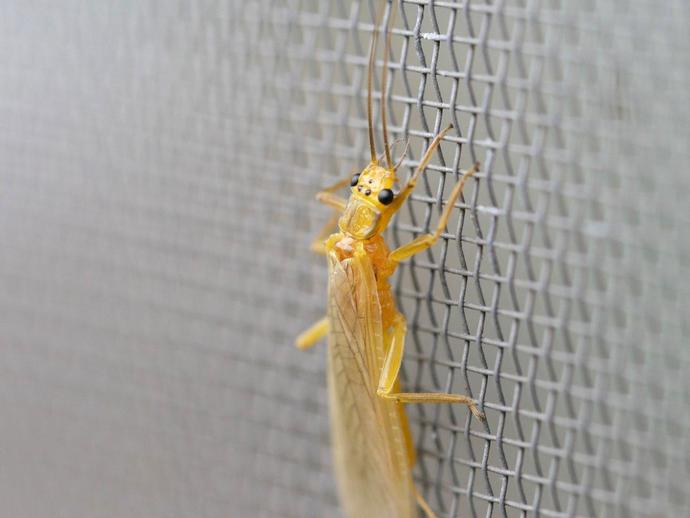
We're reaching into the archives for today's #BenInNature update presented by our friends at ...
March 7, 2021
We're reaching into the archives for today's #BenInNature update presented by our friends at Carter Bank & Trust! The following post was originally published on May 31, 2020. If you're a trout fisherman, this little fellow will probably look familiar. According to VMNH Executive Director Dr. Joe Keiper, this is a green stonefly from the family Chloroperlidae. Stoneflies belong to the order Plecoptera, which contains about 3,500 species. They're believed to be one of the most primitive winged insects. Stoneflies spend the early part of their life as aquatic nymphs, and they are highly sensitive to water pollution. If you find adult stoneflies near your house, you can rest assured that your local streams are healthy. They ...
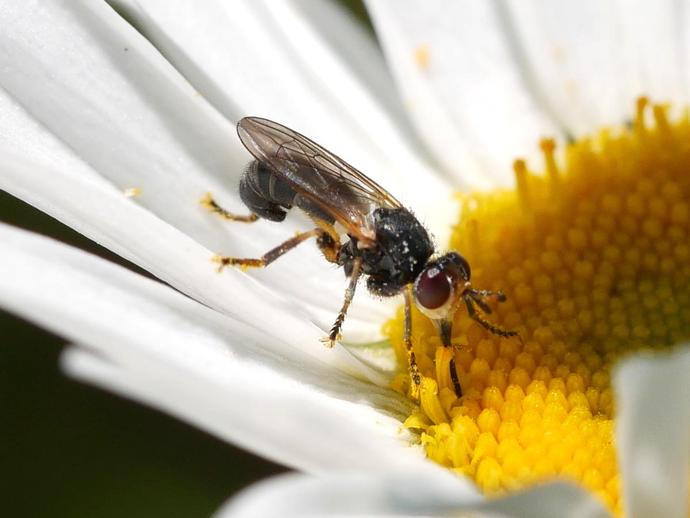
We're reaching into the archives for today's #BenInNature update presented by our friends at ...
March 6, 2021
We're reaching into the archives for today's #BenInNature update presented by our friends at Carter Bank & Trust! The following post was originally published on May 30, 2020. We generally think of flies as being attracted to gross stuff, but that isn't always the case. According to VMNH Executive Director Dr. Joe Keiper, this fly belongs to the family Conopidae and is likely a member of the genus Zodion. This family is commonly referred to as the "thick-headed flies" (which seems a little mean). There are about 800 species within this family, and many of them are mimics that resemble wasps or bees. There are a couple of things that all members of Conopidae have in common. For one, they like to visit flowers to lap up ...
Meet Nannaria hokie ...
March 5, 2021
Meet Nannaria hokie, a newly described species of millipede that resides on the campus of Virginia Tech! VMNH Myriapodologist Dr. Jackson Means was part of the team that discovered and described this species of millipede, which also goes by the common name "Hokie twisted-claw millipede" due to the presence of twisted claws on their feet before their reproductive organs. Roanoke's WDBJ-7 (CBS) interviewed Jackson earlier today regarding Nannaria Hokie and plans to air the interview during its 4 and 5:30pm telecasts. If you live in the Roanoke market, be sure to check it out!
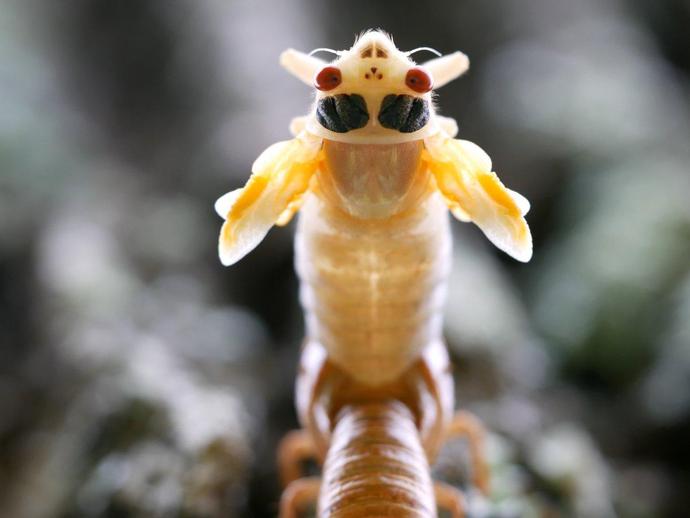
Ben here with today's edition of #BenInNature presented by our friends at Carter Bank & Trust!
March 5, 2021
Ben here with today's edition of #BenInNature presented by our friends at Carter Bank & Trust! This week, we've been looking at some of my favorite never-before-seen photos of critters we've looked at previously. We'll close out the week with one of my favorite photos I've ever taken: a periodical cicada, captured while in the process of molting! I took this photo early one morning this past spring when we had the massive emergence of periodical cicada Brood IX, which appeared in parts of Virginia, North Carolina, and West Virginia. This year, there's going to be another huge emergence of periodical cicadas! Brood X will be popping up soon in Delaware, Georgia, Illinois, Indiana, Kentucky, Maryland, Michigan, North ...
Ol' Giant Tooth is the center of attention during this week's episode of Museum Minute!
March 5, 2021
Ol' Giant Tooth is the center of attention during this week's episode of Museum Minute! ABOUT MUSEUM MINUTE The Virginia Museum of Natural History has a spectacular assortment of displays within its exhibit galleries! Some displays are unforgettable, while others don't always get the attention they deserve. Through the original series "Museum Minute", museum educators highlight various displays throughout the exhibit galleries, while providing intriguing facts you may not have known. "Museum Minute" is made possible thanks to VMNH Corporate Partners Carter Bank & Trust (www.cbtcares.com) and Boxley Materials Company (www.boxley.com)!

The museum's public access elevator is officially back in service!
March 4, 2021
The museum's public access elevator is officially back in service!! While the work of museum scientists and educators frequently takes the spotlight, the museum couldn't operate without the hard work of many staff behind the scenes. Today, VMNH Buildings and Grounds Manager Tim King took the first official ride on the museum's revamped public access elevator! Since last summer, Tim has overseen the elevator improvement project, which included extensive upgrades to ensure the elevator's efficiency, reliability and safety for all visitors and staff. Happy elevating, everyone!
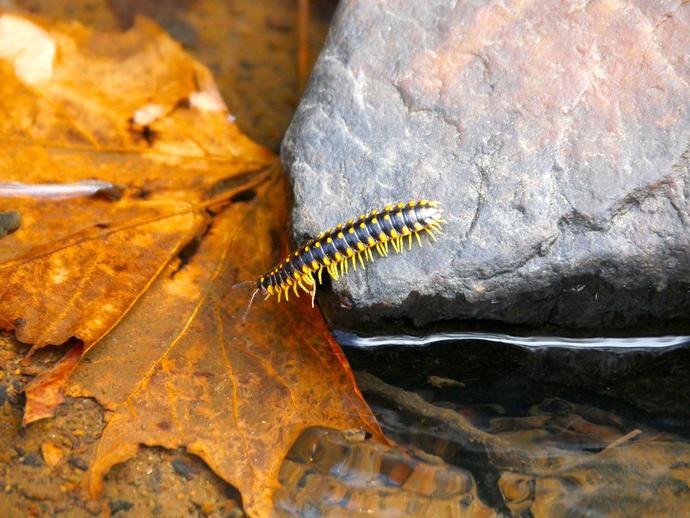
Ben here with the Thursday edition of #BenInNature presented by our friends at Carter Bank & ...
March 4, 2021
Ben here with the Thursday edition of #BenInNature presented by our friends at Carter Bank & Trust! This week, we're looking at some of my favorite never-before-seen photos of critters we've looked at previously. Today's photo: the millipede Apheloria virginiensis virginiensis! I found this particular millipede several months ago. It had somehow stranded itself on a rock in the middle of a creek. After taking a few photos, I placed it back on dry land to resume its millipede duties (which mainly consist of eating leaf litter). If you spend a lot of time in the woods in southwest Virginia, you've probably seen several of these little guys; their brilliant yellow coloration makes them difficult to miss. Their color ...
How do scientists know what dinosaurs looked like?
March 3, 2021
How do scientists know what dinosaurs looked like? How do scientists know what color dinosaurs were? How do scientists know that dinosaurs laid eggs? How do scientists know what food dinosaurs ate? Oh, and how do scientists know woolly mammoths had fur? These were all great questions a curious young learner from Carlisle School had for VMNH Assistant Curator of Paleontology Dr. Adam Pritchard, so he answers them in this week's special edition of "Tales of Ancient Life" presented by Carter Bank & Trust and Boxley Materials Company! ABOUT TALES OF ANCIENT LIFE Our planet has an incredible story to tell and VMNH Assistant Curator of Paleontology Dr. Adam Pritchard helps share it through his original video series, "Tales of ...
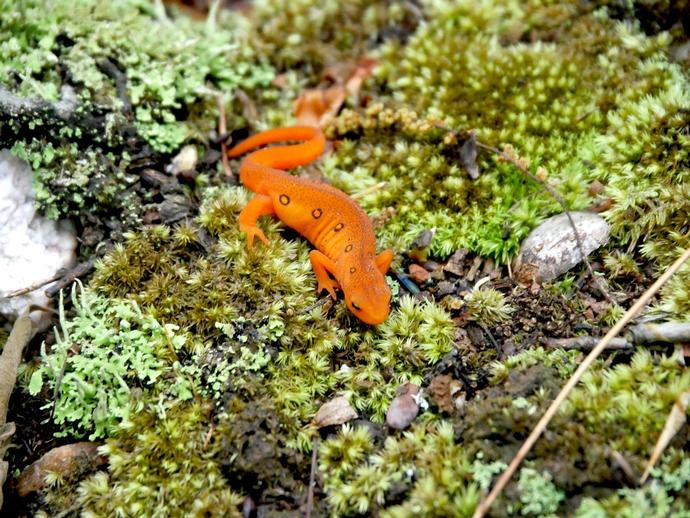
Ben here with today's #BenInNature update presented by our friends at Carter Bank & Trust!
March 3, 2021
Ben here with today's #BenInNature update presented by our friends at Carter Bank & Trust! This week, we're looking at some of my favorite never-before-seen photos of critters we've looked at previously. Today's pick: the eastern newt (Notophthalmus viridescens), one of the most photogenic little critters you're liable to find out in the woods here in southwest Virginia! This particular eastern newt is in the "red eft" stage of life, which is when these newts are easiest to find. If you go out into the woods in the spring or summer shortly after a rainstorm and keep your eyes on the ground, you're pretty likely to spot one! These newts have quite an unusual life cycle. They begin their lives as aquatic larvae, and ...
Archives
2025
2024
2023
2022
2021
2020
2019
2018
2017
2016
2015
2014
2013
2012
2011
2010
2009
2008

Please Visit Us Soon
Hours:
Tuesday - Saturday: 10am - 4pm
Sunday - Monday: Closed
Admission:
$10 for ages 18-59
$5 for ages 3-17, seniors 60+, and college students
FREE for children under 3, museum members, and members of ASTC participating institutions
My 4 year old son loves going to the museum. The exhibits are educational, interactive and kid-friendly.
”

 Hours & Admissions
Hours & Admissions Directions
Directions